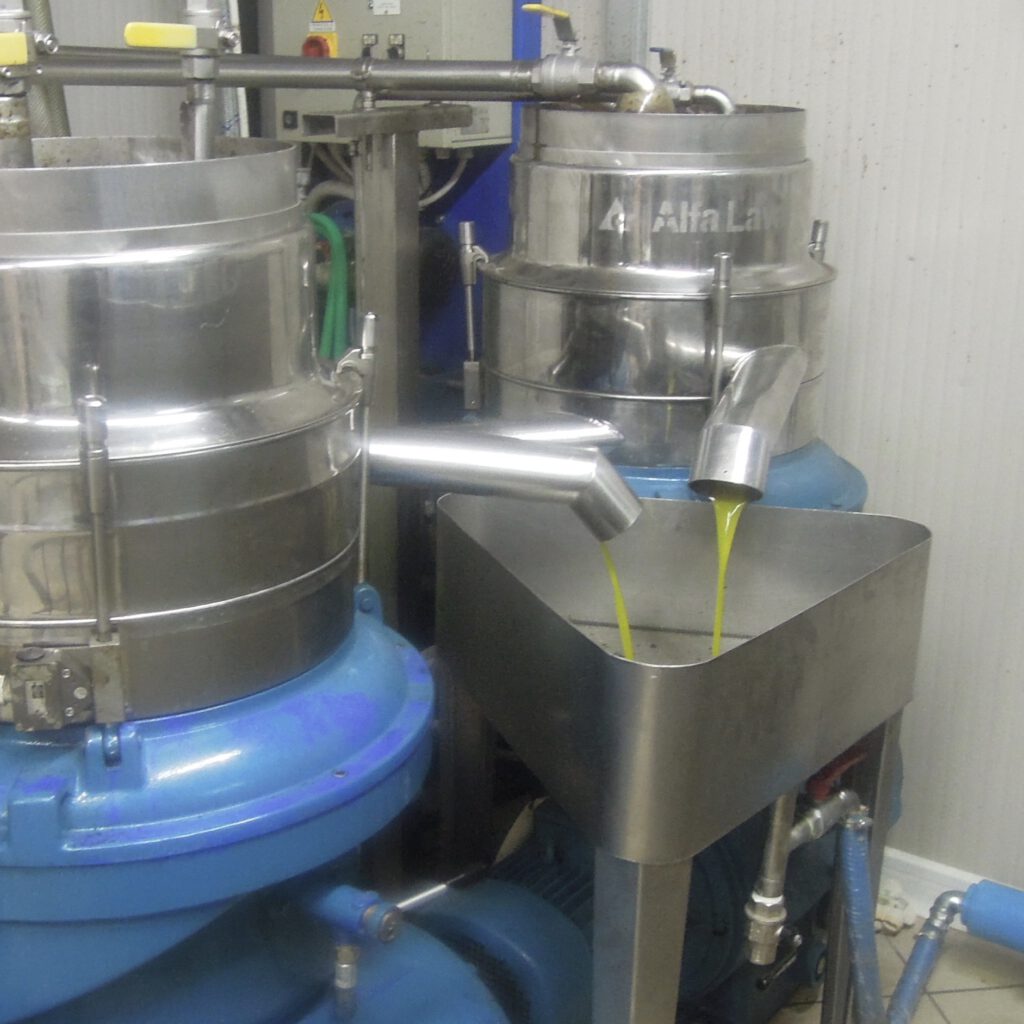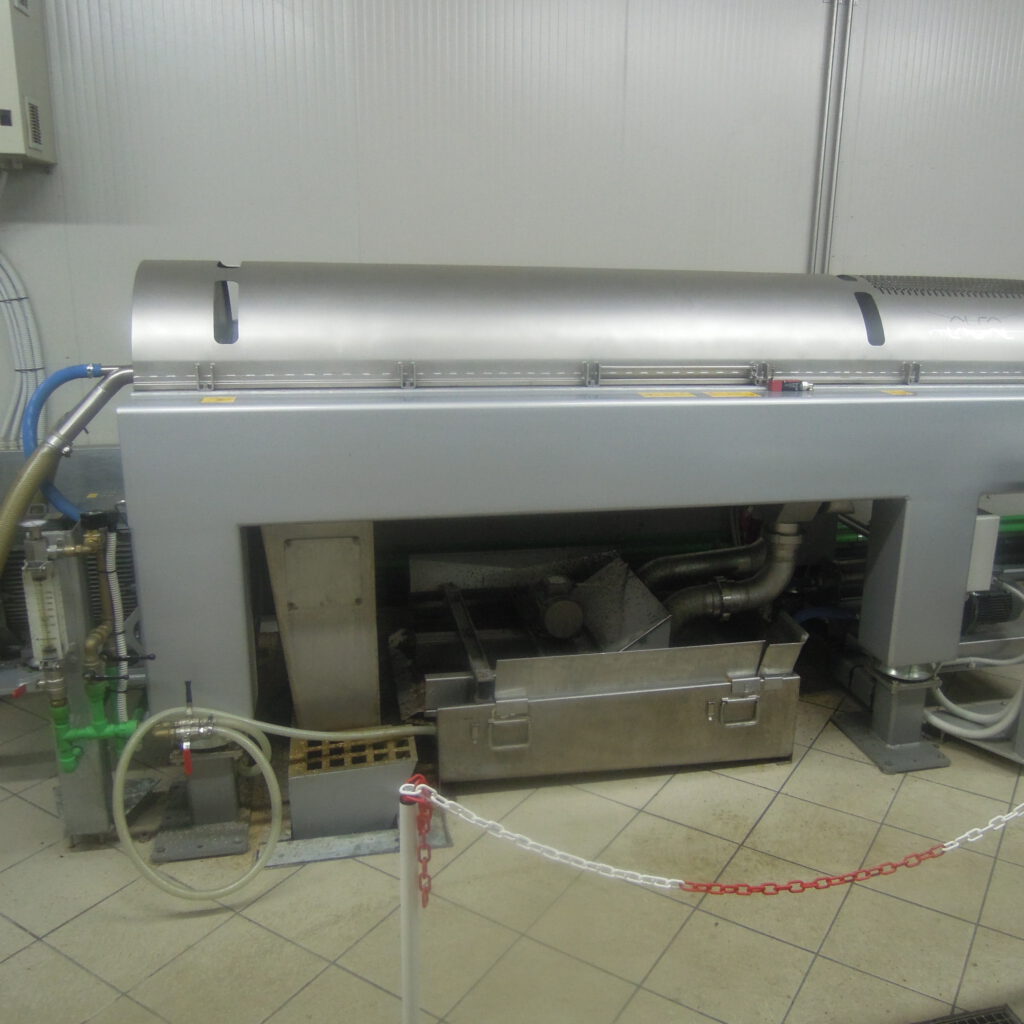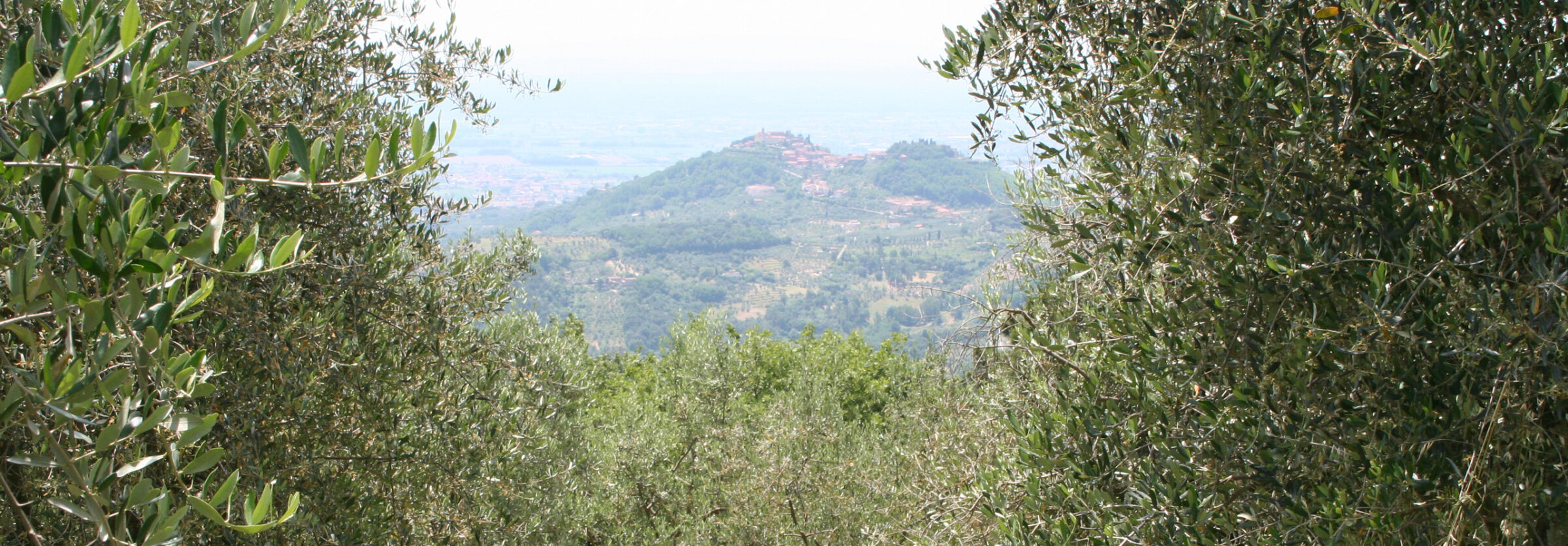Tradition or Modernity?
Choosing the right oil mill (Italian: Frantoio) is not just a question of taste!
It may be the most aromatic olive varieties, the perfect climate, and the precisely right harvest time… but in the end, it is the oil mill that extracts the precious product of our desire from the olives. It is the mill that significantly influences the taste, health benefits, and shelf life of our olive oil.

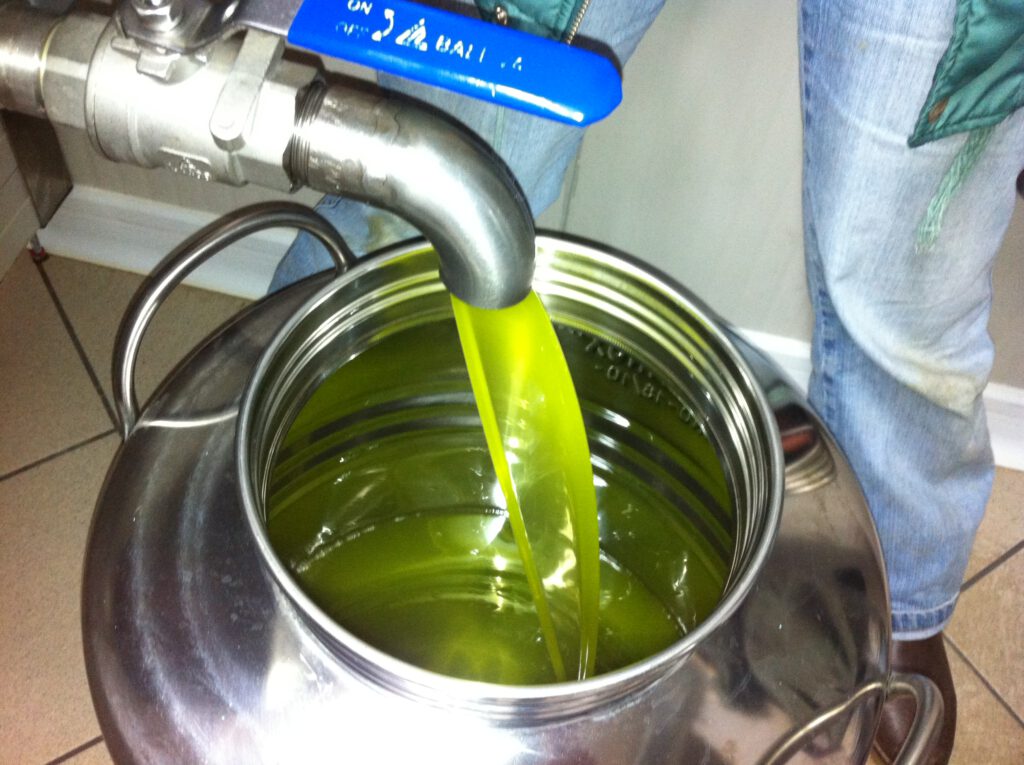
While our farming neighbors harvest their olives relatively late and take them to a traditional local oil mill, we place importance on gentle processing that aligns with modern knowledge about the valuable components of good olive oil. A decisive factor here is the duration of air exposure: the more oxygen comes into contact with the olive paste, the greater the oxidative effects. It attacks the valuable polyphenols in the olive oil and diminishes their antioxidant effect.
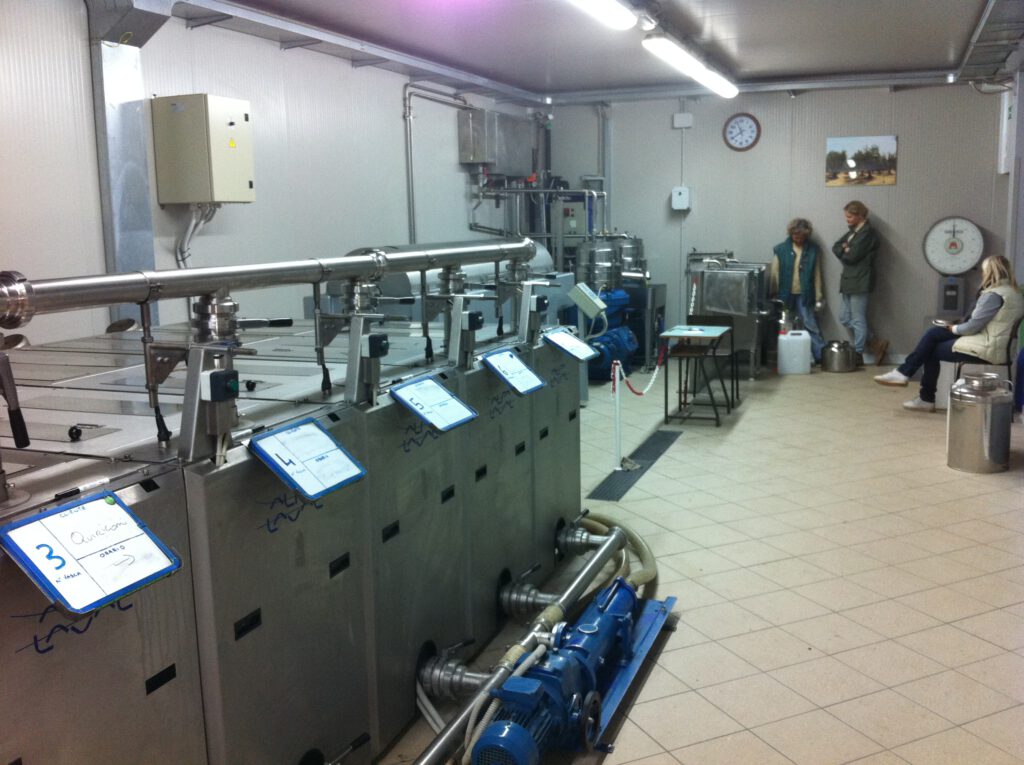 A quality-oriented oil mill therefore strives to carry out the processing with minimal air exposure. Oil from a traditional mill tastes significantly milder, but has lost much of its health value. Oil from a modern Frantoio is rich in vitamins and antioxidants: it tingles in the throat and has a slightly bitter note.
A quality-oriented oil mill therefore strives to carry out the processing with minimal air exposure. Oil from a traditional mill tastes significantly milder, but has lost much of its health value. Oil from a modern Frantoio is rich in vitamins and antioxidants: it tingles in the throat and has a slightly bitter note.
In the modern mill, the processing is continuous — the olives are poured into the washing unit and pass through the entire oil extraction process without interruption until they exit the centrifuge. Here, the patient producer awaits to receive their “Extra Vergine.” The machines are made entirely of stainless steel, meaning there is no contamination from oxidized machine parts. In contrast, the pressing mats of the traditional mill, due to their extensive internal surface, provide ideal conditions for undesirable oxidative processes and microbiological growth!
